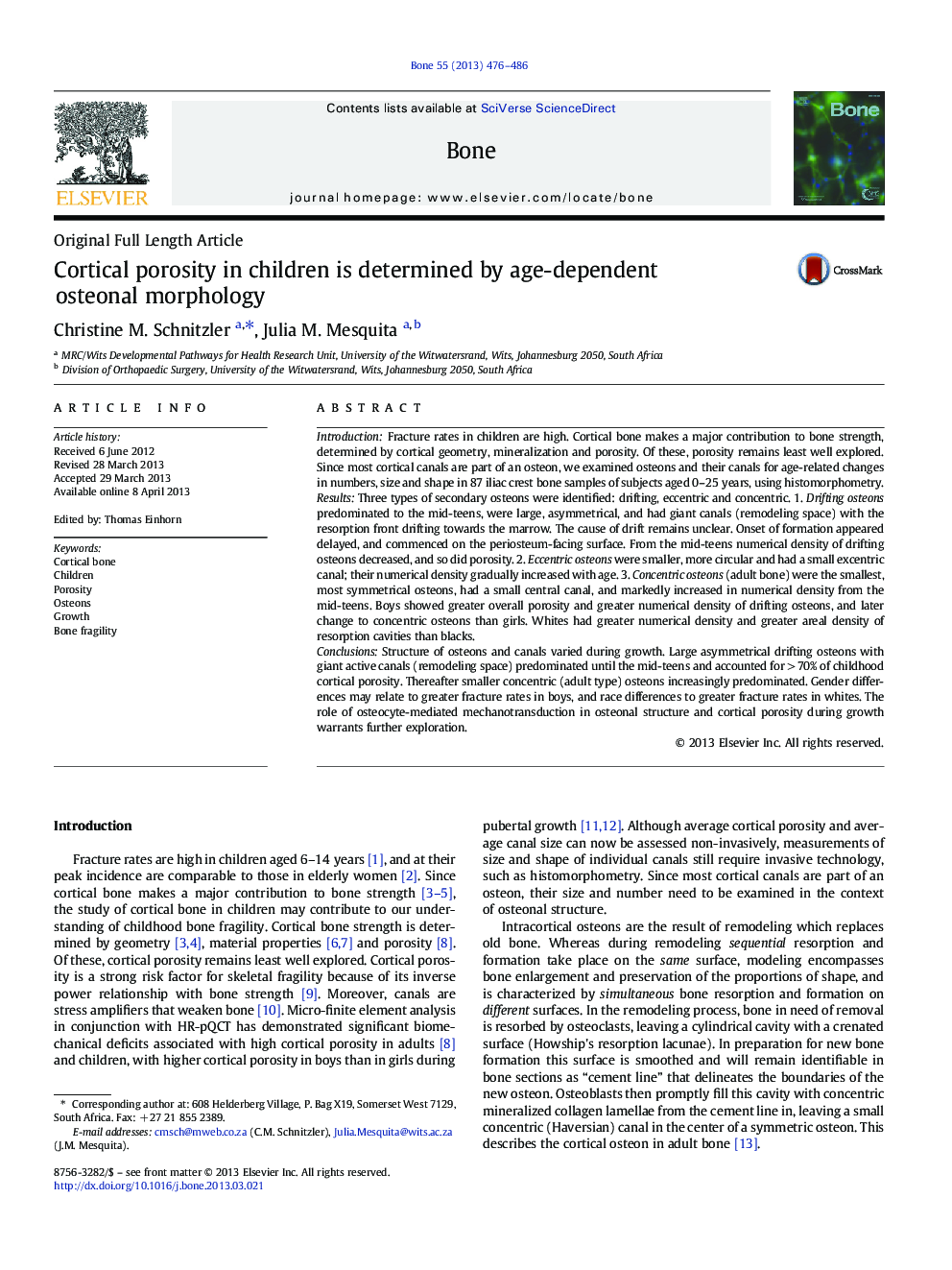| کد مقاله | کد نشریه | سال انتشار | مقاله انگلیسی | نسخه تمام متن |
|---|---|---|---|---|
| 2779238 | 1153256 | 2013 | 11 صفحه PDF | دانلود رایگان |

• Cortical osteon and canal morphology during growth are described histomorphometrically.
• In the mid-teens large asymmetrical drifting osteons were replaced by small, symmetrical osteons.
• The remodeling space of drifting osteons was the major source of childhood cortical porosity.
IntroductionFracture rates in children are high. Cortical bone makes a major contribution to bone strength, determined by cortical geometry, mineralization and porosity. Of these, porosity remains least well explored. Since most cortical canals are part of an osteon, we examined osteons and their canals for age-related changes in numbers, size and shape in 87 iliac crest bone samples of subjects aged 0–25 years, using histomorphometry.ResultsThree types of secondary osteons were identified: drifting, eccentric and concentric. 1. Drifting osteons predominated to the mid-teens, were large, asymmetrical, and had giant canals (remodeling space) with the resorption front drifting towards the marrow. The cause of drift remains unclear. Onset of formation appeared delayed, and commenced on the periosteum-facing surface. From the mid-teens numerical density of drifting osteons decreased, and so did porosity. 2. Eccentric osteons were smaller, more circular and had a small excentric canal; their numerical density gradually increased with age. 3. Concentric osteons (adult bone) were the smallest, most symmetrical osteons, had a small central canal, and markedly increased in numerical density from the mid-teens. Boys showed greater overall porosity and greater numerical density of drifting osteons, and later change to concentric osteons than girls. Whites had greater numerical density and greater areal density of resorption cavities than blacks.ConclusionsStructure of osteons and canals varied during growth. Large asymmetrical drifting osteons with giant active canals (remodeling space) predominated until the mid-teens and accounted for > 70% of childhood cortical porosity. Thereafter smaller concentric (adult type) osteons increasingly predominated. Gender differences may relate to greater fracture rates in boys, and race differences to greater fracture rates in whites. The role of osteocyte-mediated mechanotransduction in osteonal structure and cortical porosity during growth warrants further exploration.
Journal: Bone - Volume 55, Issue 2, August 2013, Pages 476–486